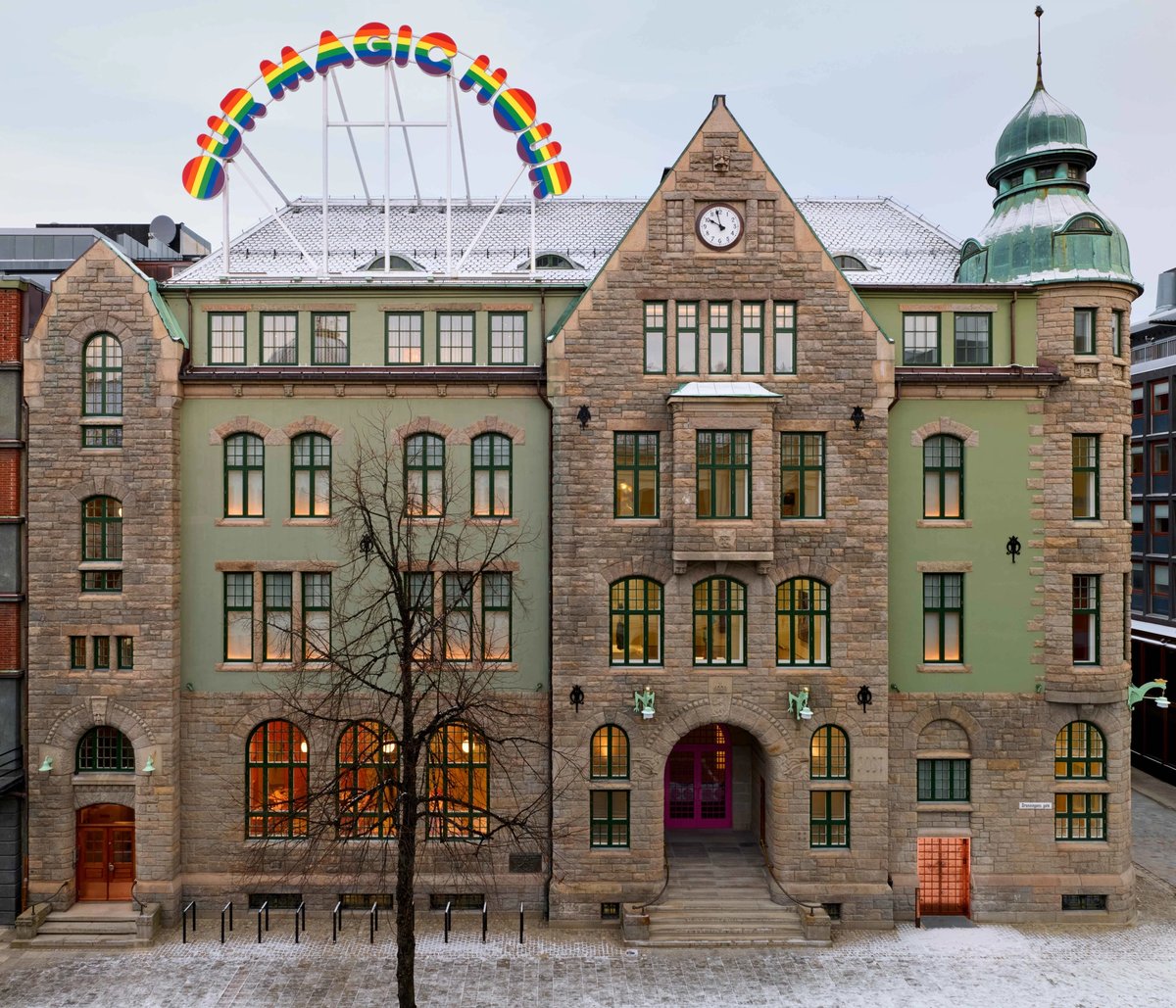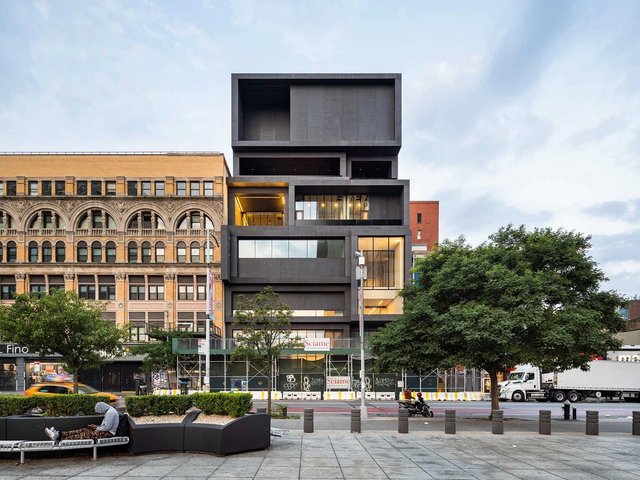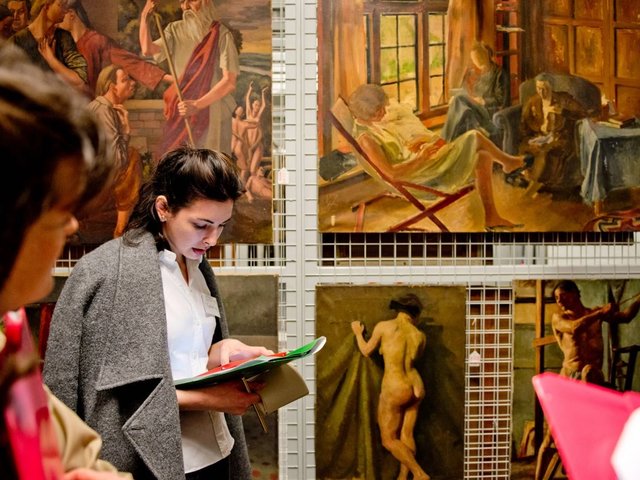An ambitious new private museum has opened in the city of Trondheim on the western coast of Norway with a mission to boost access to art locally, address gender inequality in the nation’s collections and add to the region’s appeal as a cultural destination.
The new museum, called PoMo (short for Post Office Modern), is housed over five floors and more than 4,000 sq. m in the city’s Art Nouveau former post office. It was founded by the collectors Monica Reitan and Ole Robert Reitan, who is a co-owner of Reitan AS, a Norwegian conglomerate spanning retail, finance and property. The couple, who are now divorced, have collected art for more than 20 years. With works by artists including Simone Leigh, Louise Bourgeois, Anne Imhof and Franz West, their collection is the starting point for the museum.
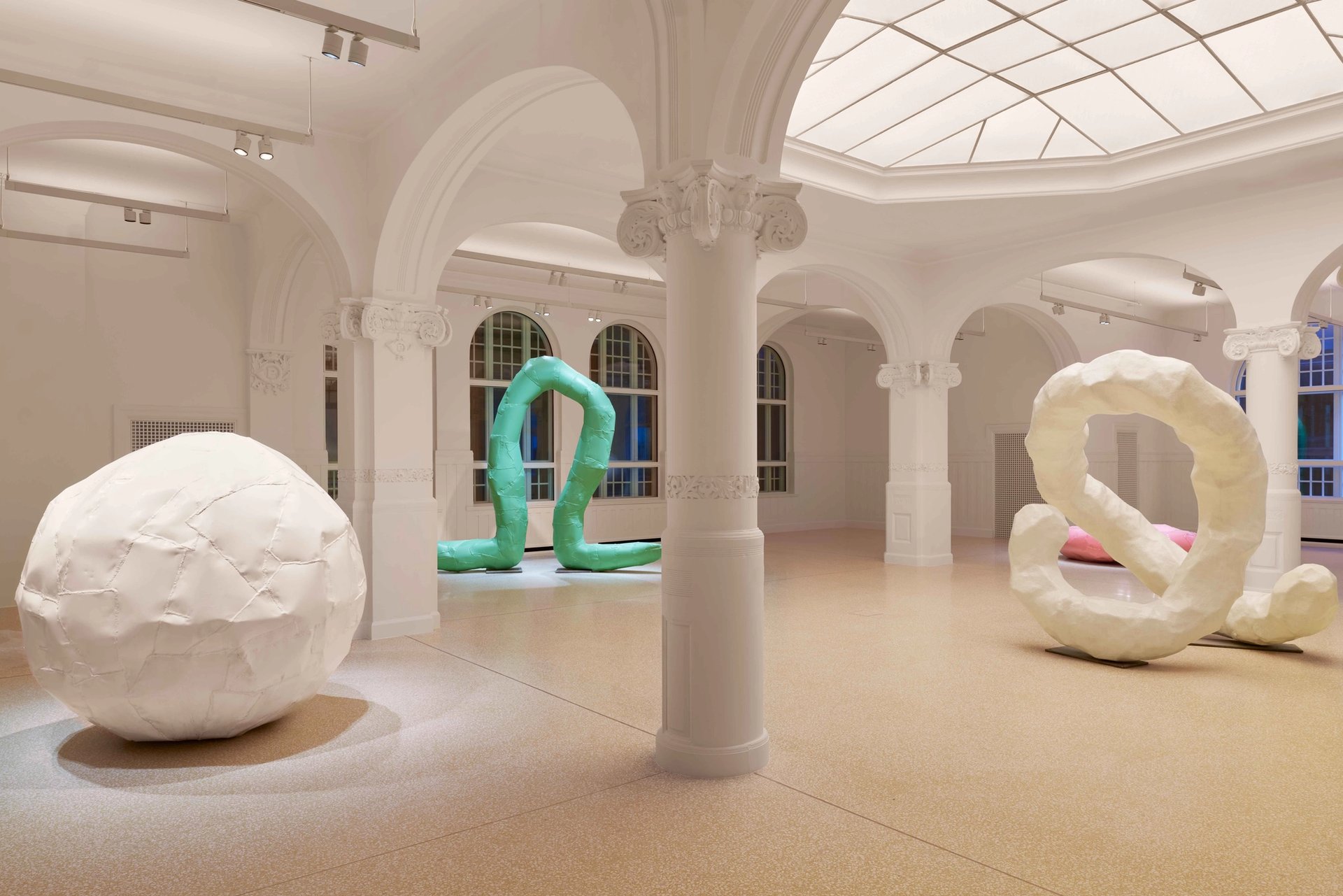
A view of PoMo’s main hall featuring several sculptures by Franz West
© India Mahdavi, Paris / Erik Langdalen Arkitektkontor, Oslo. Photo: Valérie Sadoun
PoMo aims to “tear down some of the walls between the art world and most people”, says Ole Robert. “Going into a museum can be a scary thing.” The new museum aims “to create a public space with room for everyone”.
With this in mind, the spaces, refurbished by the Iranian-French architect and designer India Mahdavi in collaboration with the Norwegian architect Erik Langdalen, are intended to be colourful and welcoming. Works on view will range from Katharina Fritsch’s Madonnenfigur (Madonna figure) (1987/2024), a yellow sculpture of the Virgin Mary previously positioned near a church in Trondheim’s shopping district, to an Ann Veronica Janssens fog room—to be installed in 2026—which surrounds visitors in artificial smog. The inaugural exhibition, Postcards from the Future (until 22 June), responds to the building’s history and “the postcard as a thematic metaphor”.
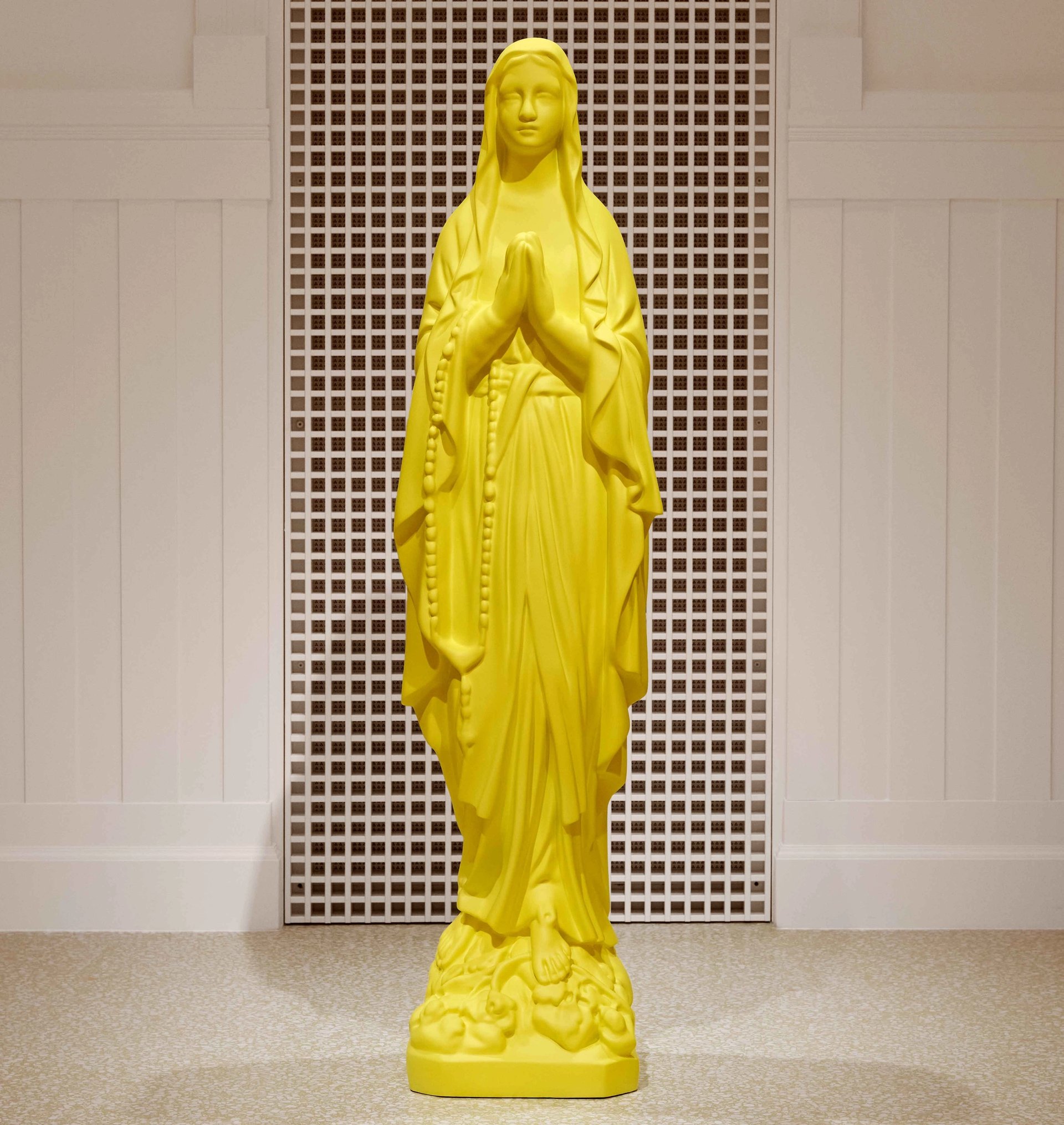
Katharina Fritsch, Madonnenfigur / Madonna (1987/2024), on display in PoMo’s main hall © Katharina Fritsch / BONO 2025. Photo: Valérie Sadoun
Ole Robert says that he has no problem seeing the museum as a commercial enterprise—despite the pushback he says he has received from fellow collectors such as Bernard Arnault and Hans Rasmus Astrup. “They are art people,” he says. “But I try to tell them all the time: commercial is not bad. It’s not an opposition between commercial and good quality. You just need to create an environment for people to get access.”
Sixty percent of the museum’s acquisitions will be by women artists. Monica says this is a contribution to rebalancing Norway’s art collections. At the National Museum in Oslo, for instance, just 11.45% of the works in the fine art collection are by women, rising to 19% in the Modern and contemporary section.
“It is important to say that the National Museum, Munch Museum and others also have this issue really high on their minds, but their collections are so big, [even] if they collect only female artists for many years, they will still not contribute [enough] to the percentage,” says PoMo’s director, Marit Album Kvernmo. “We are strengthening each other and trying to have focus.”
Despite these broader ambitions, PoMo is a project deeply embedded in a vision for Trondheim, Norway’s third largest city and home to its biggest university. The museum, which is ticketed but free for under 18s, is part of a new cultural quarter that also comprises a theatre the Reitan family has built directly behind the museum and a hotel opposite it. Nearby is another fairly recent arrival on Trondheim’s art scene, the enormous commercial gallery Kjøpmannsgata Ung Kunst (KUK).
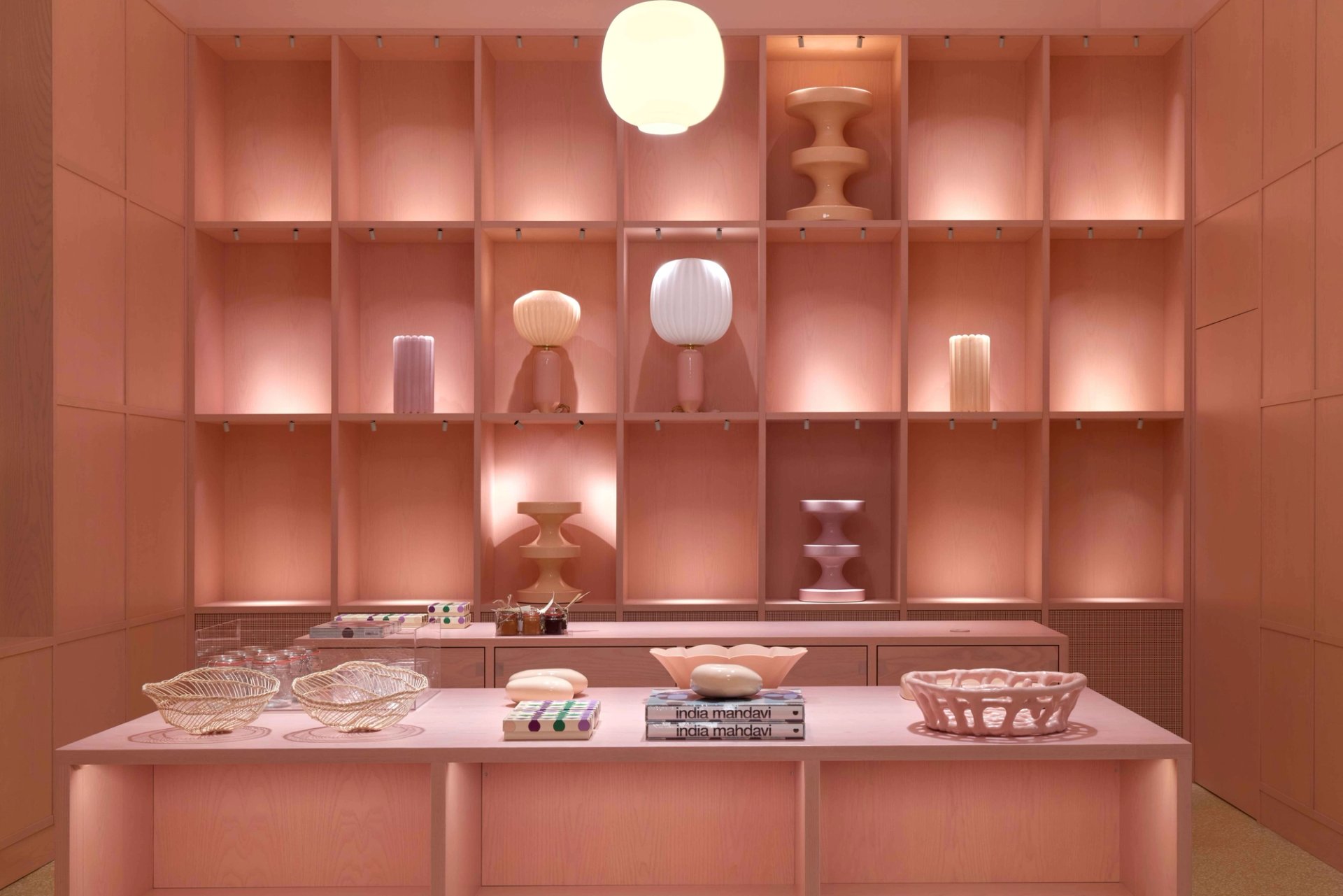
The PoMO shop
© India Mahdavi, Paris / Erik Langdalen Arkitektkontor, Oslo.
Photo: Valérie Sadoun
While both Ole Robert and Monica Reitan declined to comment on the costs of setting up the museum—which are being covered by the family—the idea is that it will eventually pay for itself. “The whole area is getting more attractive and more valuable [thanks to] this museum coming up,” Ole Robert says. “So, it’s going to be financially OK, I think.”
Both collectors grew up in Trondheim—also the home of the Reitan brand—and say they want to pay tribute to their home city. “There is a French saying, noblesse oblige,” Ole Robert says. “It’s a wish to contribute and to pay back in some way or another ... [PoMo] is a result of our enormous love and respect for the city and the people living there.”


